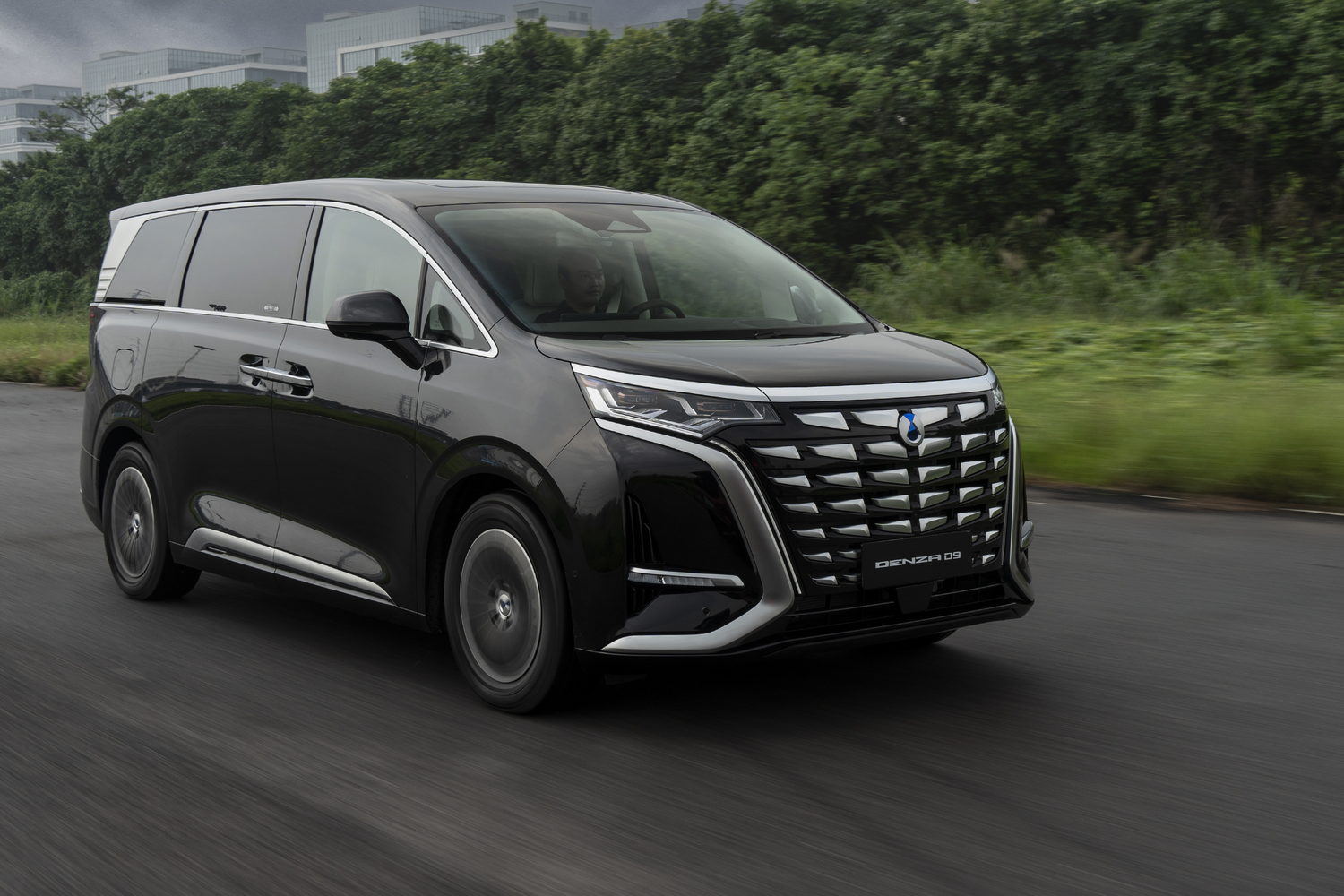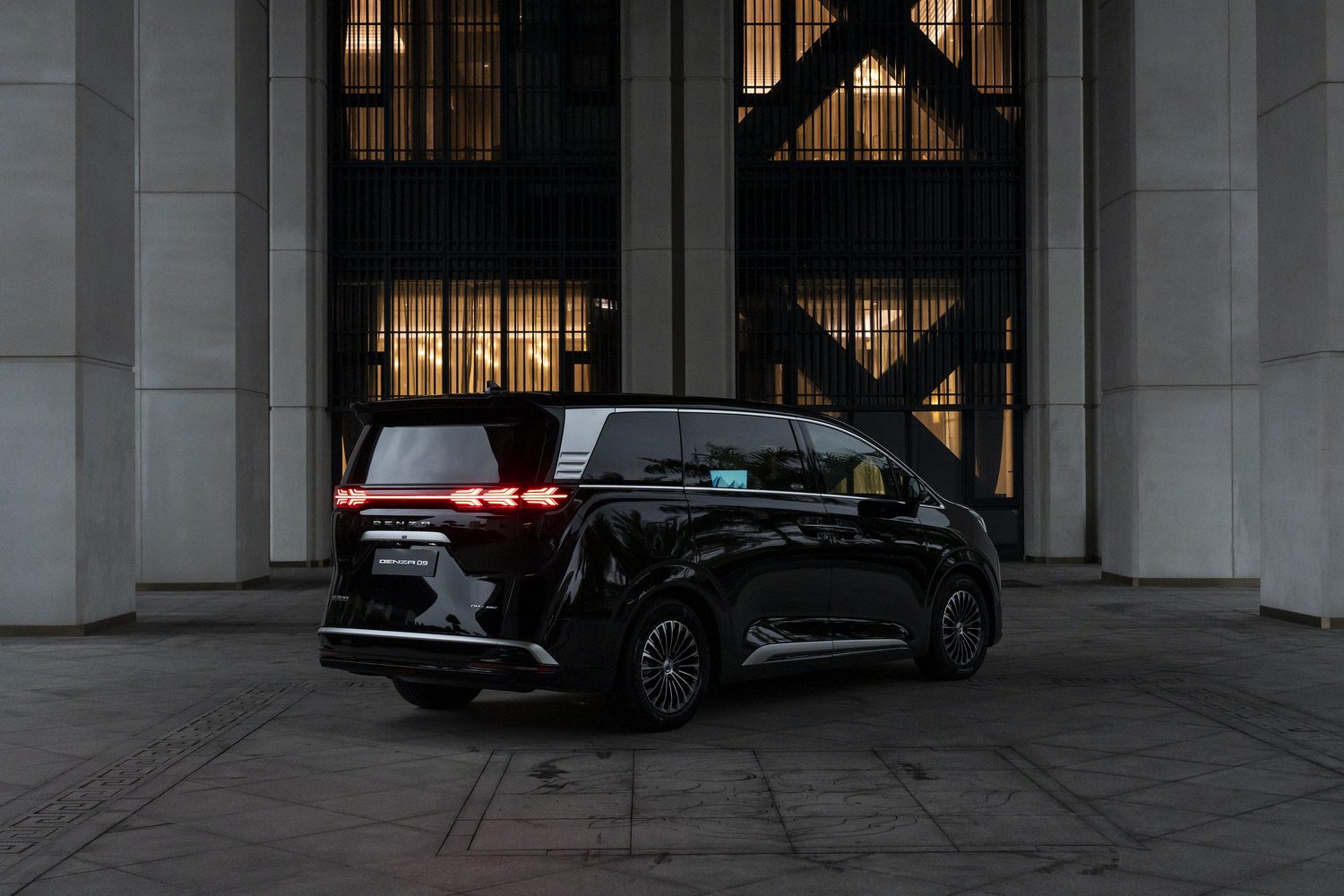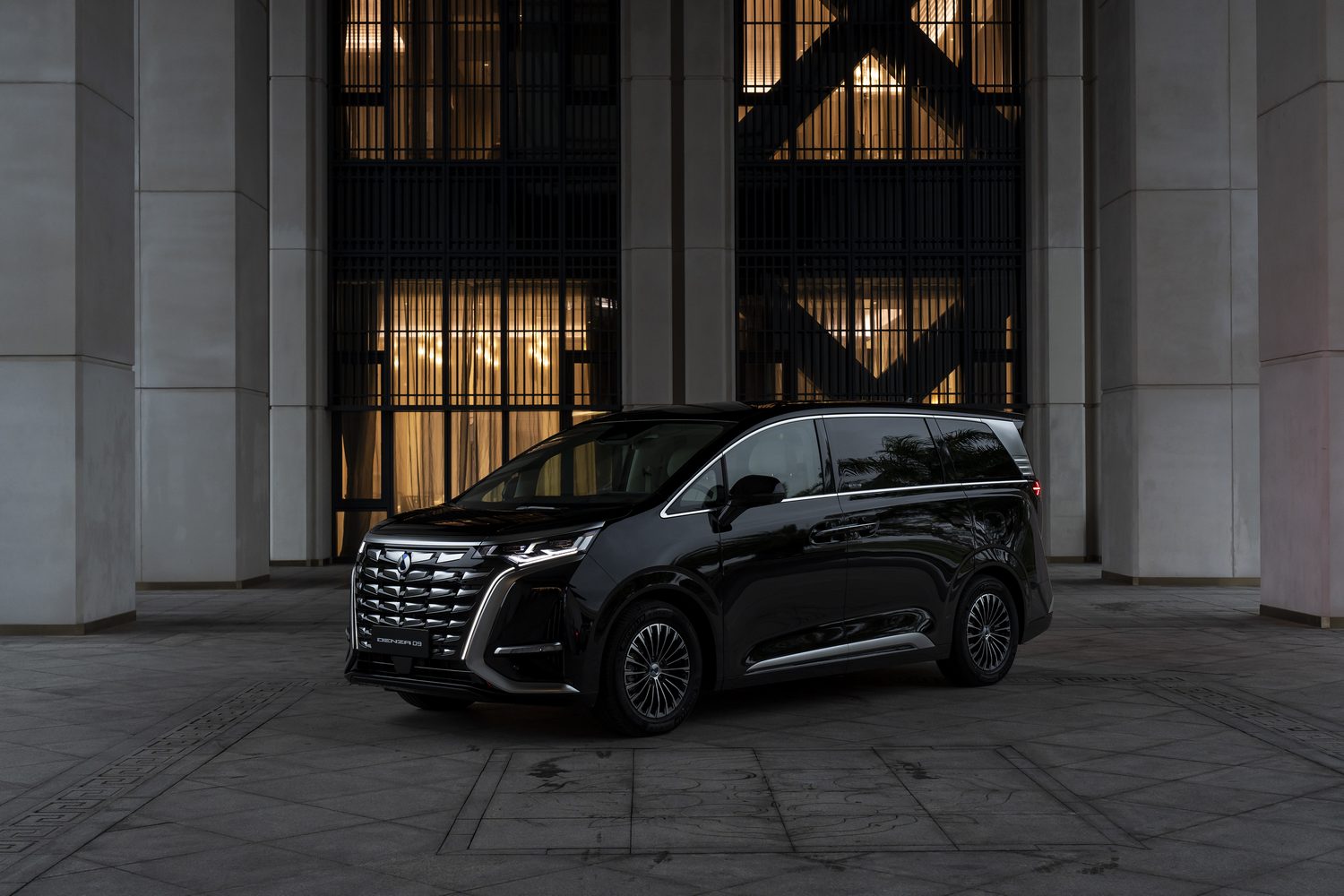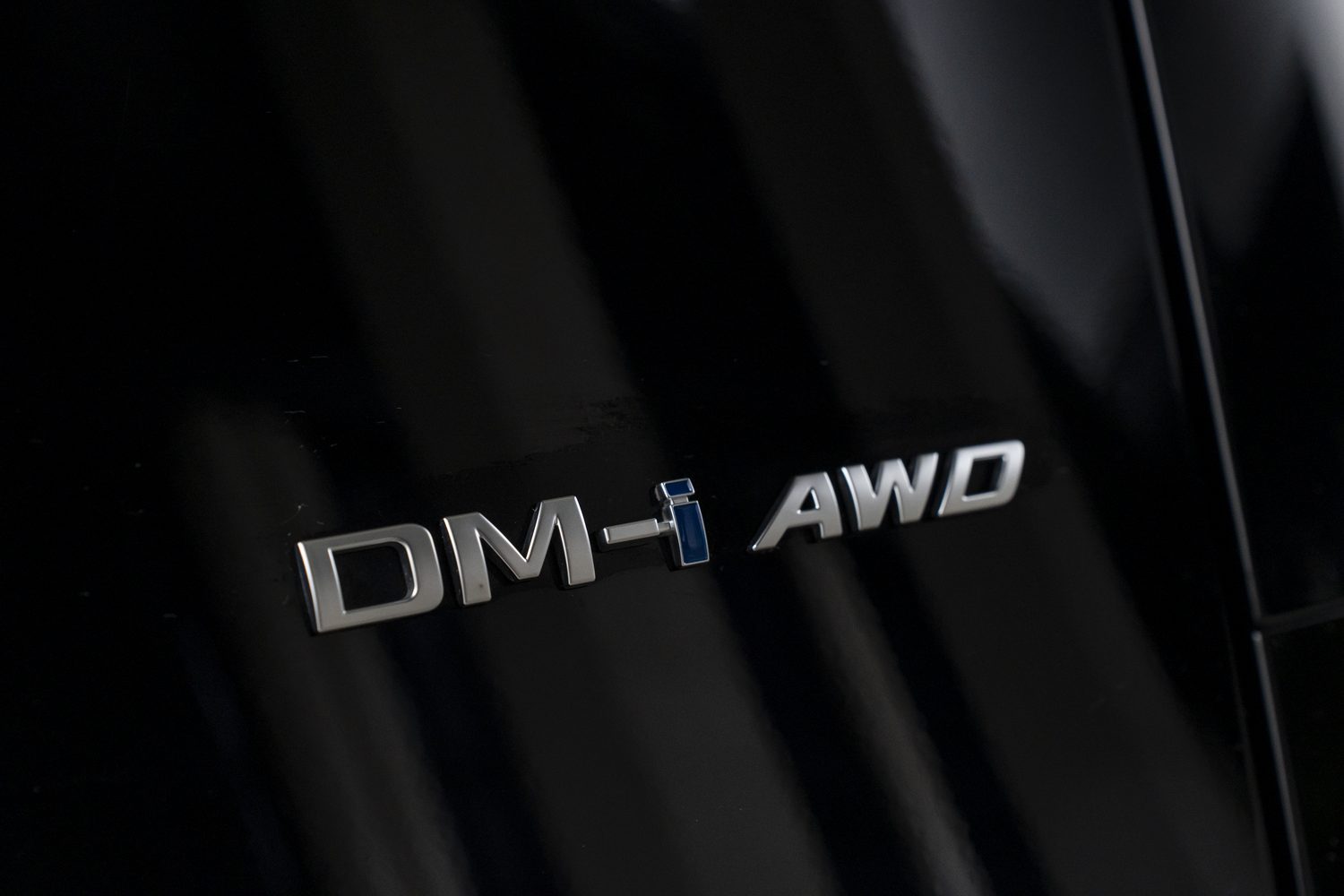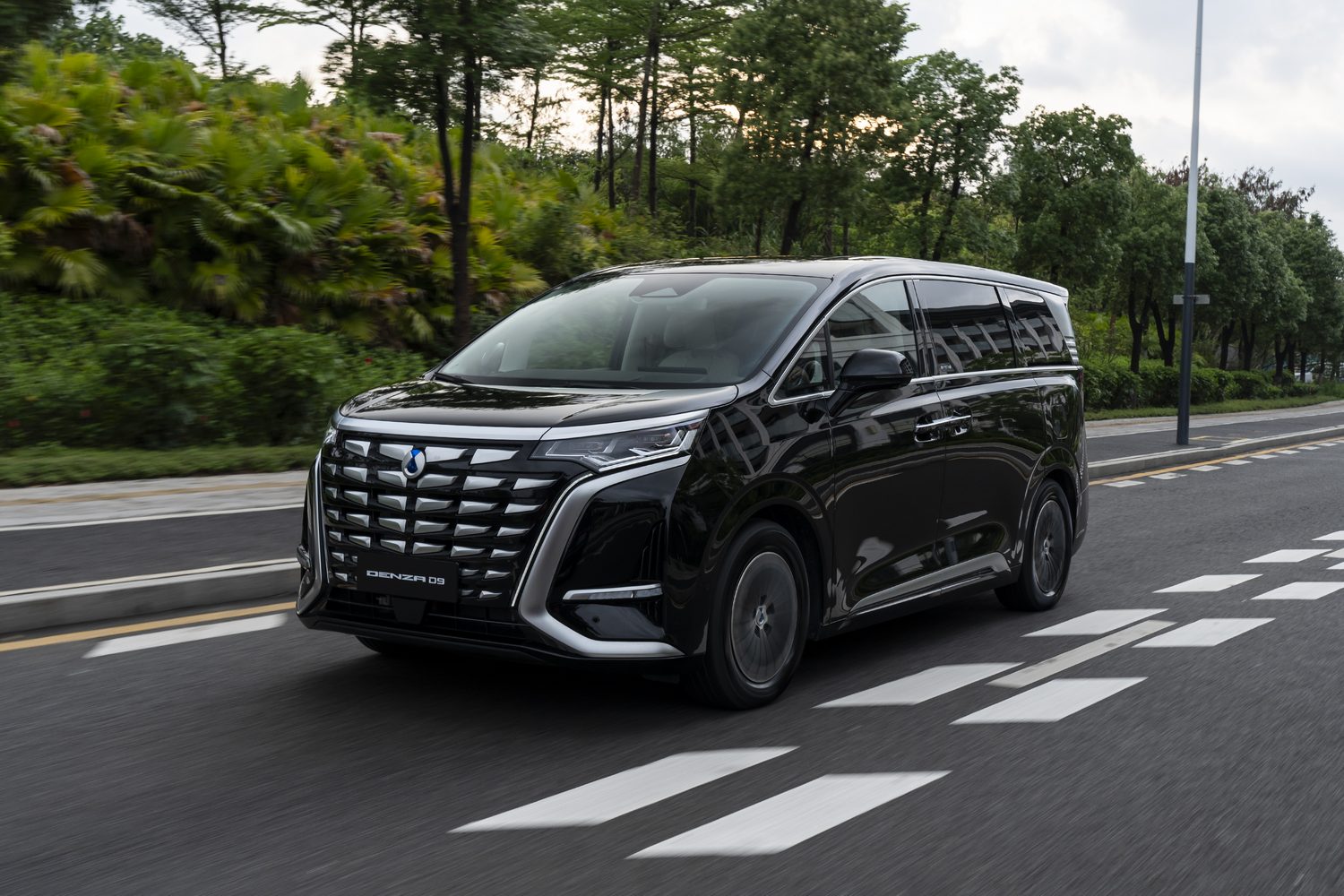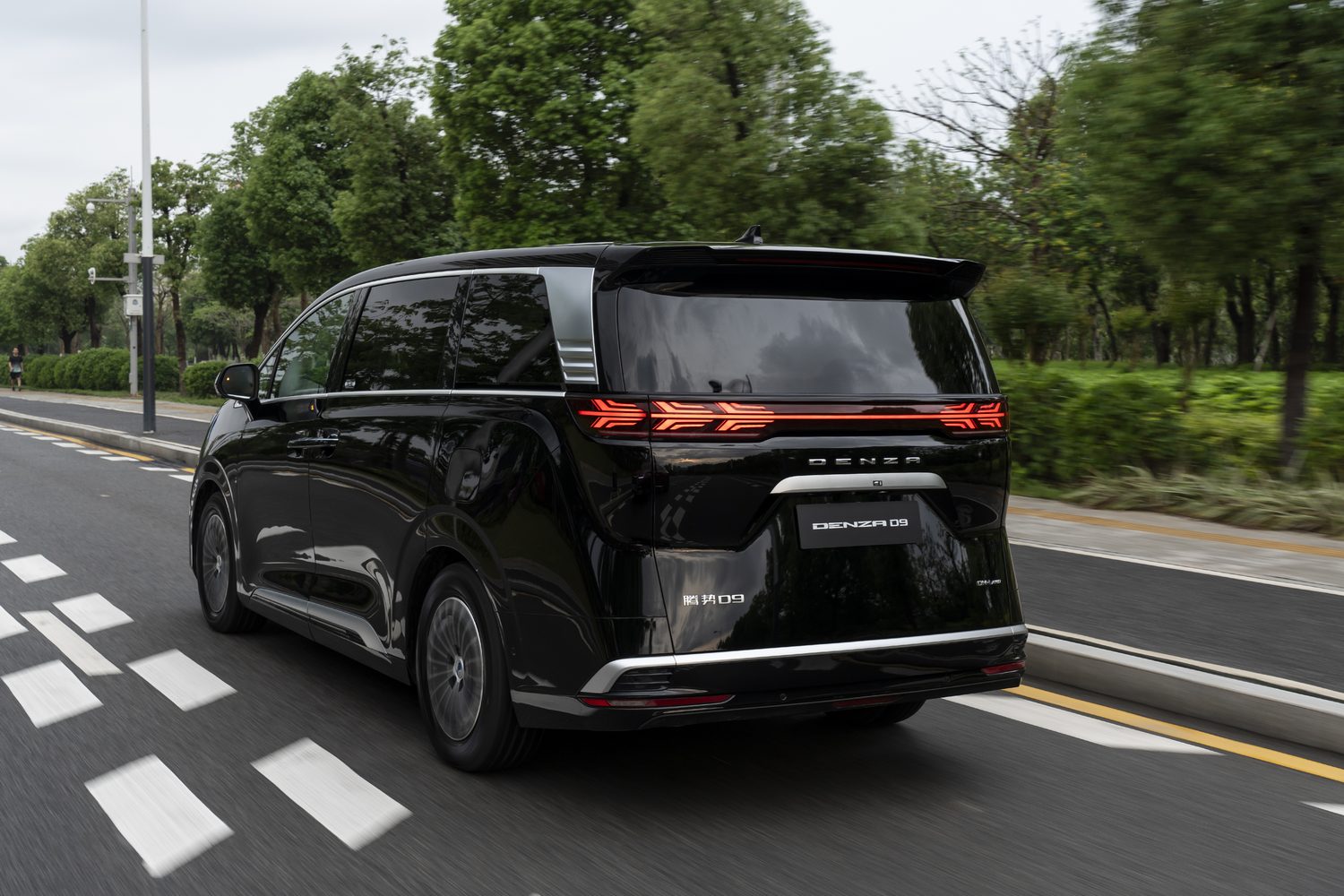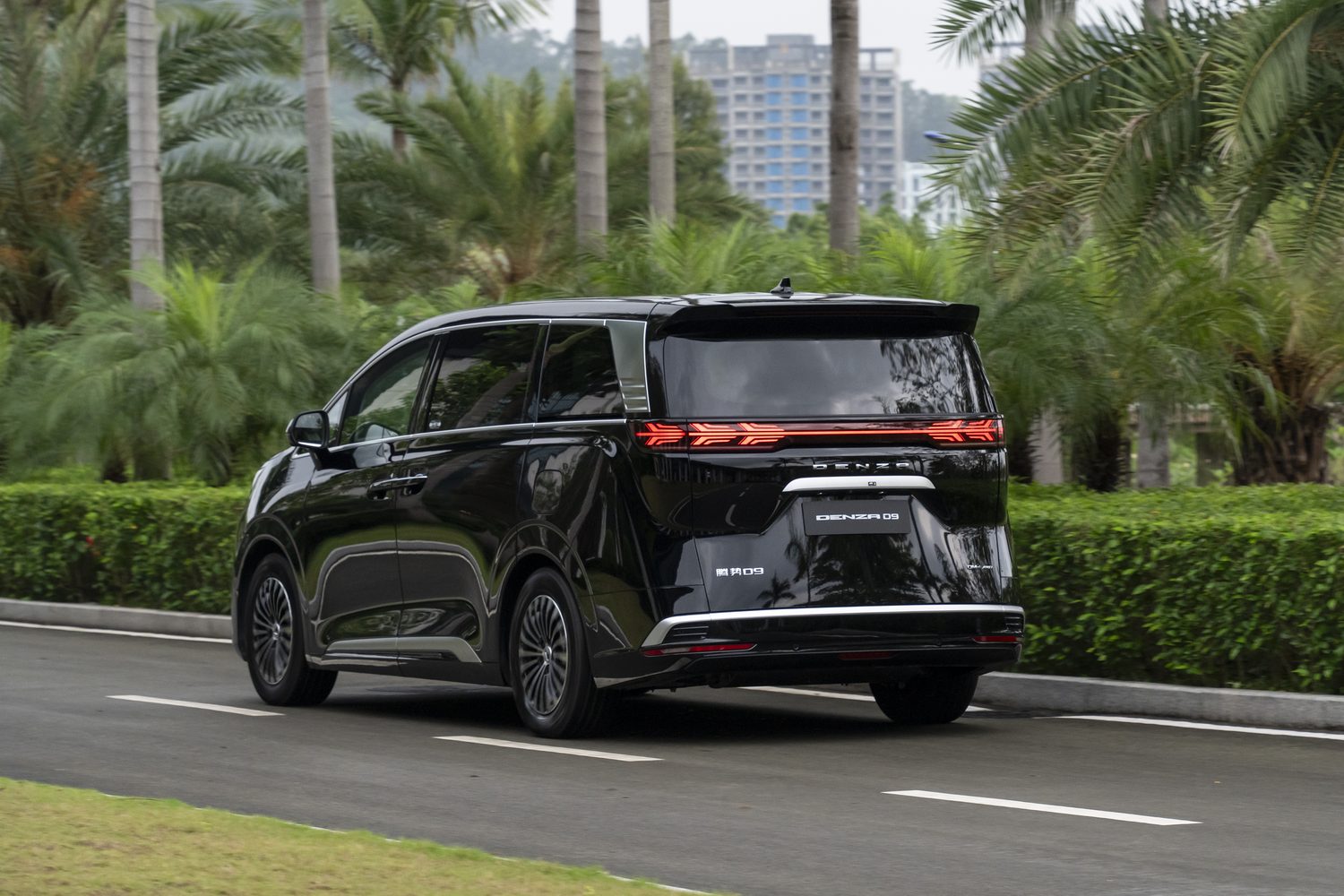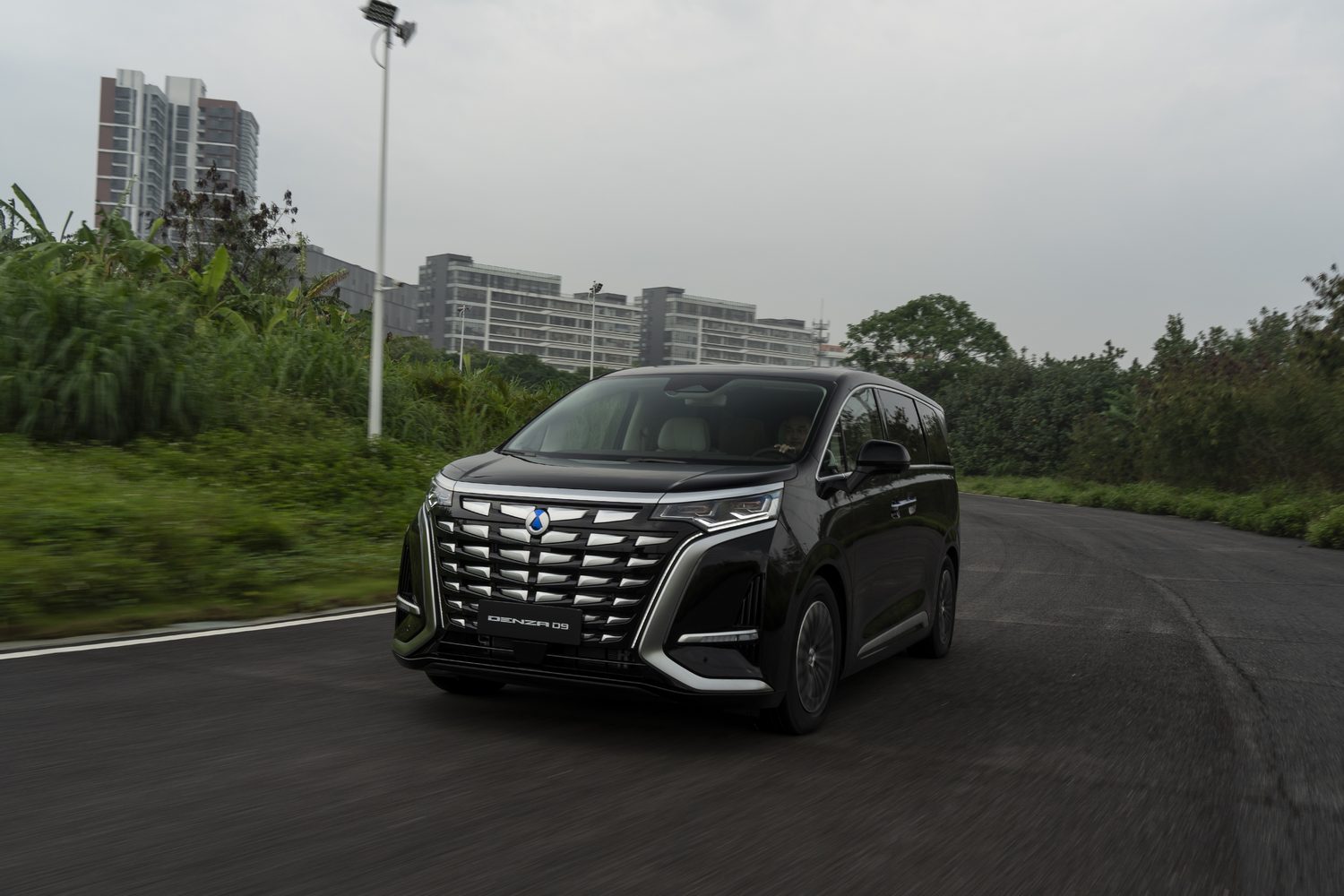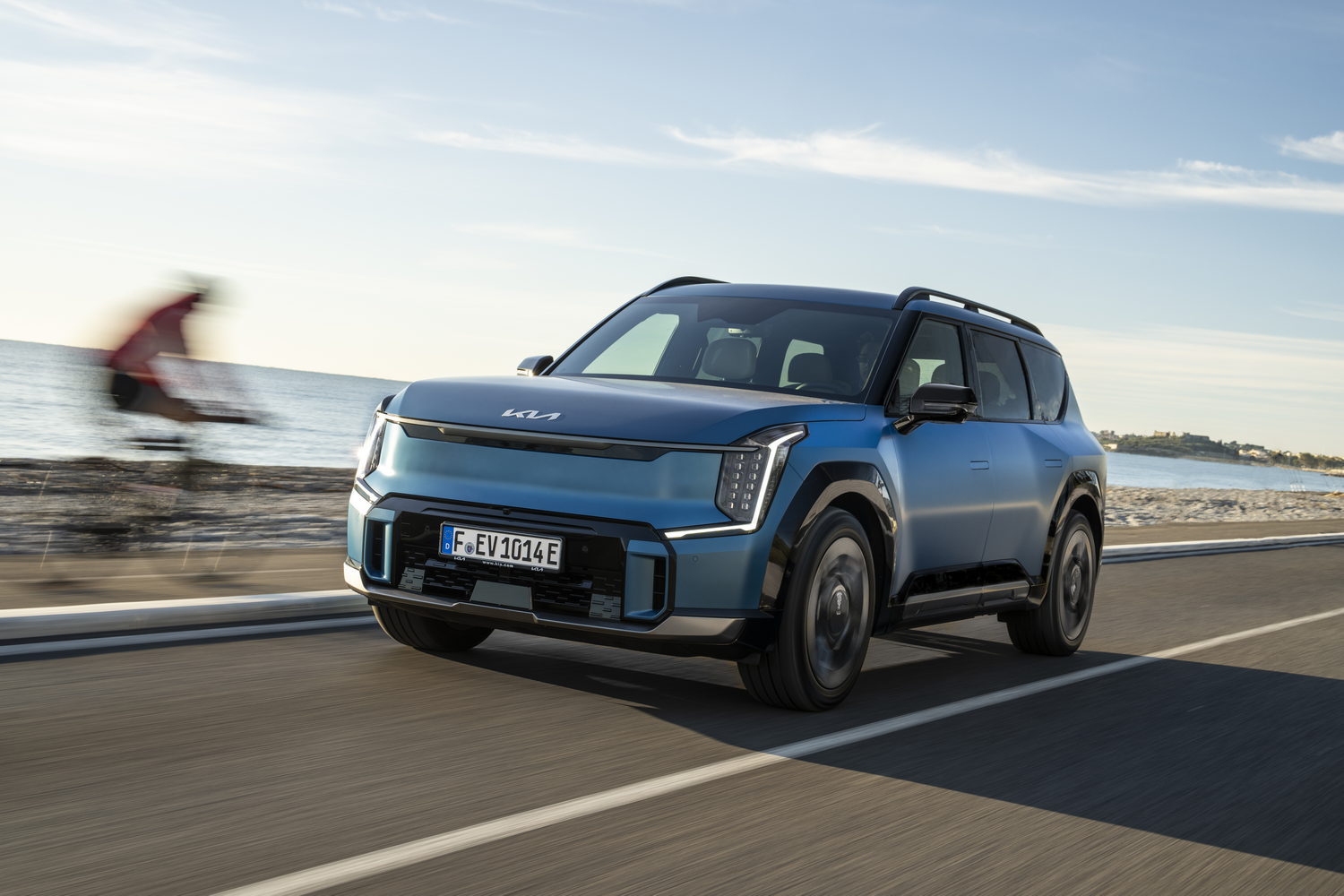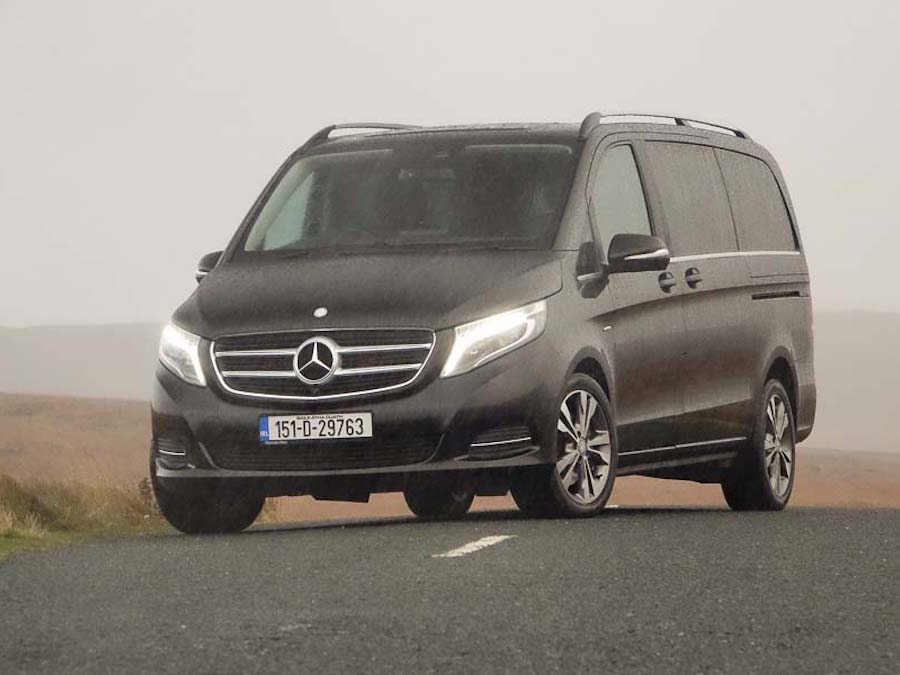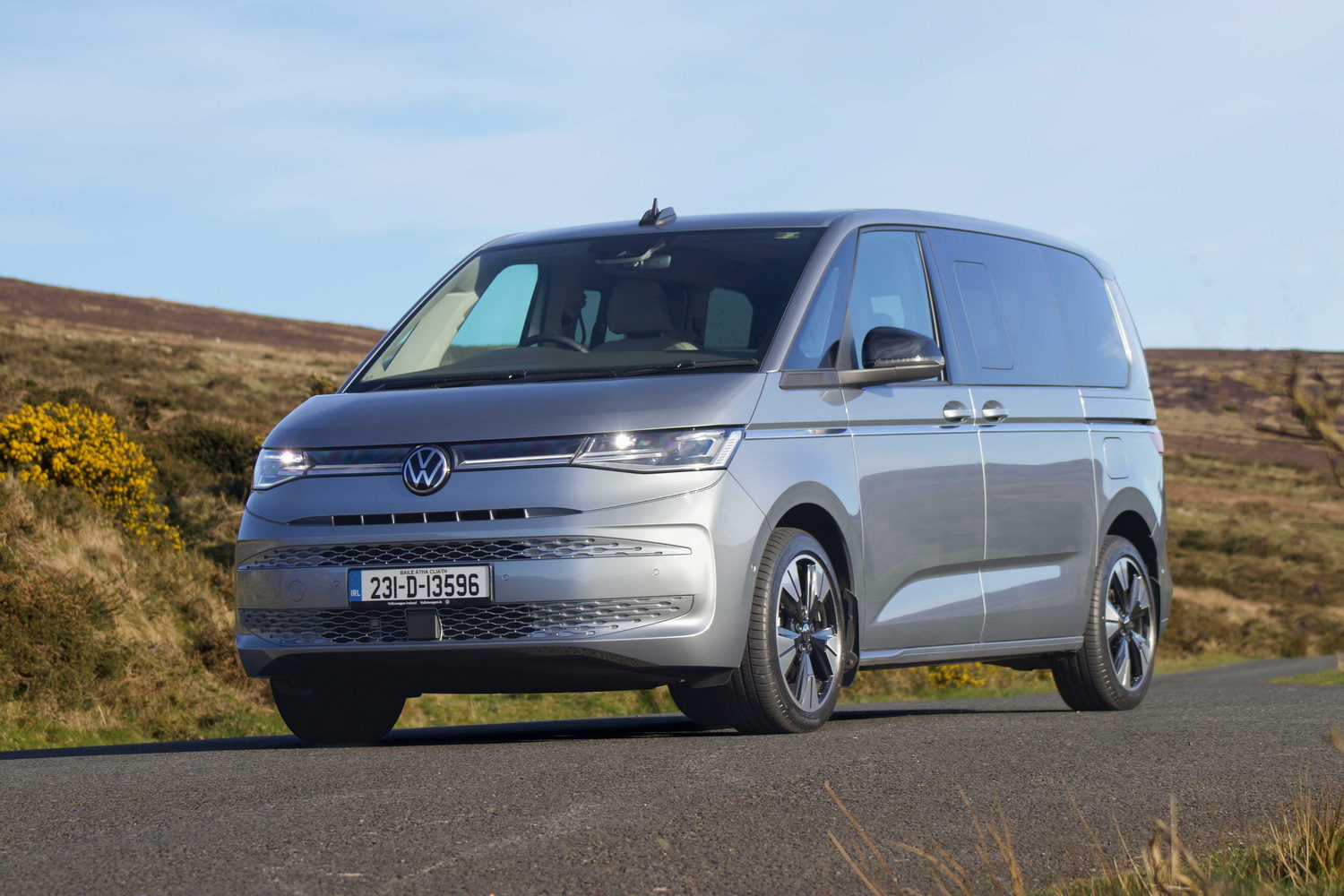The Denza D9 is something of an antidote to large, ostentatious, luxury SUVs. Instead of height and bulk, it majors on space and comfort, and if that massive chrome grille is a turn-off, then there are major compensations inside.
In the metal
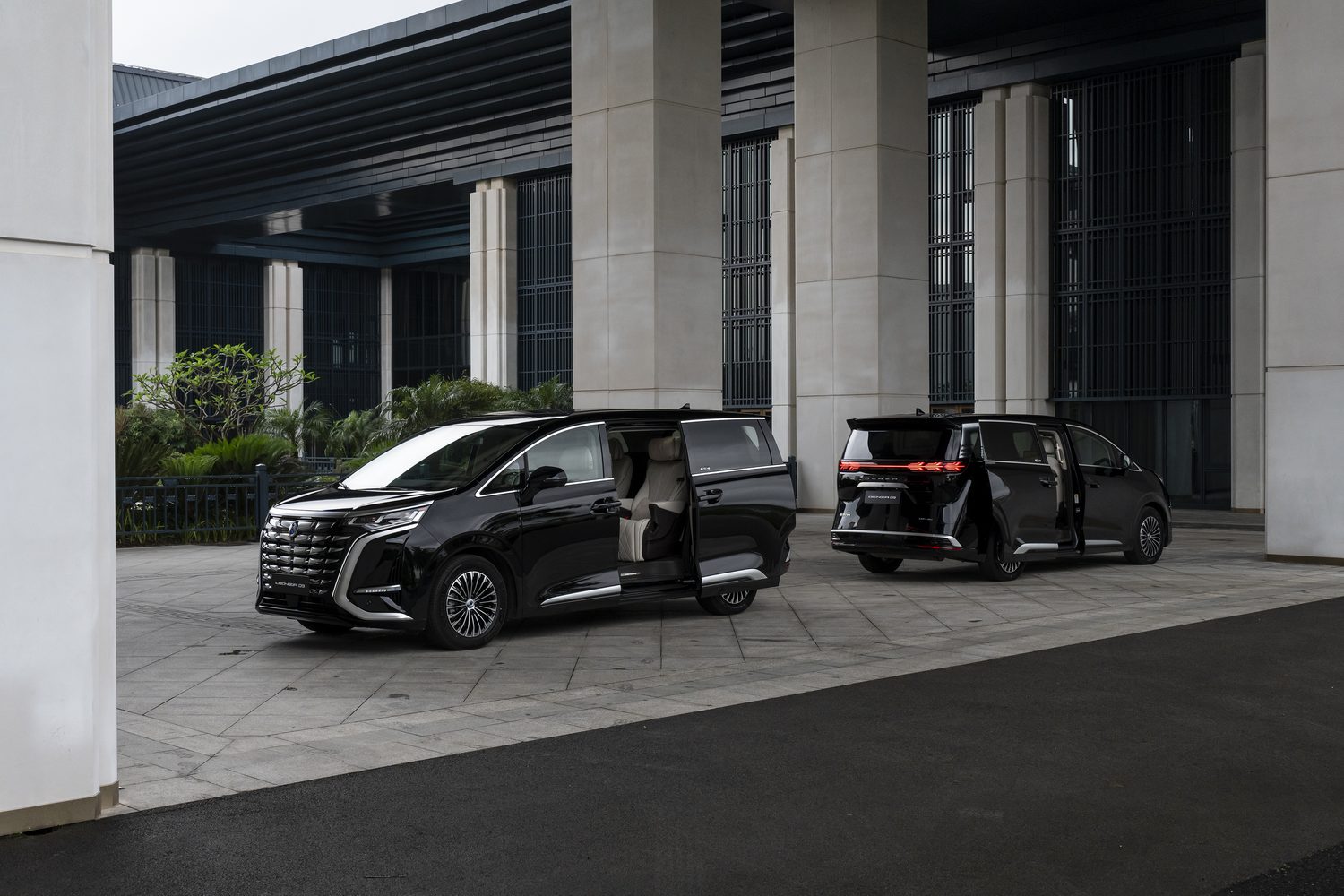
You might say that the Denza D9 has a face only a mother could love, but this style of big seven-seat MPV, with prominent chrome grilles and luxurious cabins, have recently been a massive hit in the Asian markets, and they’re starting to spread to Europe and the rest of the world - see similar debuts from both Volvo and Lexus for proof of that.
Denza may not be a brand you’ve heard of, but it has been on sale in China since 2010, when it was formed as a partnership between BYD and Mercedes-Benz. You can think of Denza, to an extent, as the Lexus to BYD’s Toyota - a luxury and premium brand that can share much of its tech and engineering with humbler models.
In terms of its looks, as we said you’d probably have to be a fan already too like it. To be fair to the D9, around the back and down the sides, it has quite crisp, clean lines which are entirely conventional and nicely executed and it’s only when you get around to that honking great nose that things start to look a little more divisive.
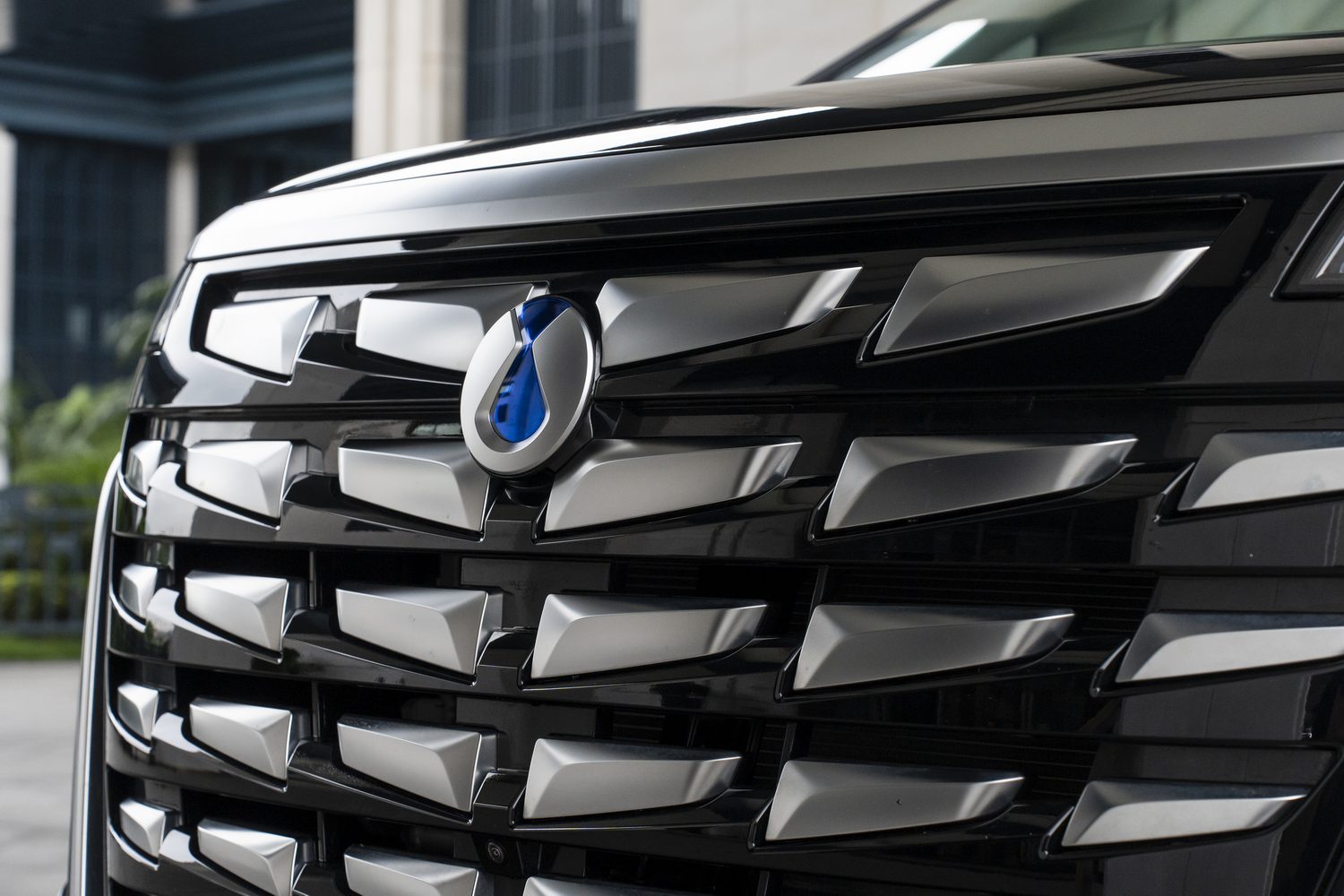
That’s honestly of little enough import, though, as the true appeal of the Denza D9 lies inside. With a huge 3,110mm wheelbase, this is an exceptionally roomy car (it’s 5.2 metres long, and is precisely as wide as it is tall, at 1,920mm in both directions). The seating is set out in a 2-2-3 formation, but it’s the middle row that’s the most interesting. We’ll come back to that in a second...
Up front, you sit up high, but not toweringly so, in an extremely comfortable driver’s seat, looking out over a well-appointed dashboard filled with the usual BYD-based complement of two large digital screens - one for your instruments and one for the infotainment system. The D9 does away with the rotating central screen gimmick, but it could do with some new software to help separate it from more humble BYD models, although to be fair this was a Chinese market car we were driving, with all of the controls and layouts in Mandarin, so it’s probably not very fair to judge it entirely on this basis.
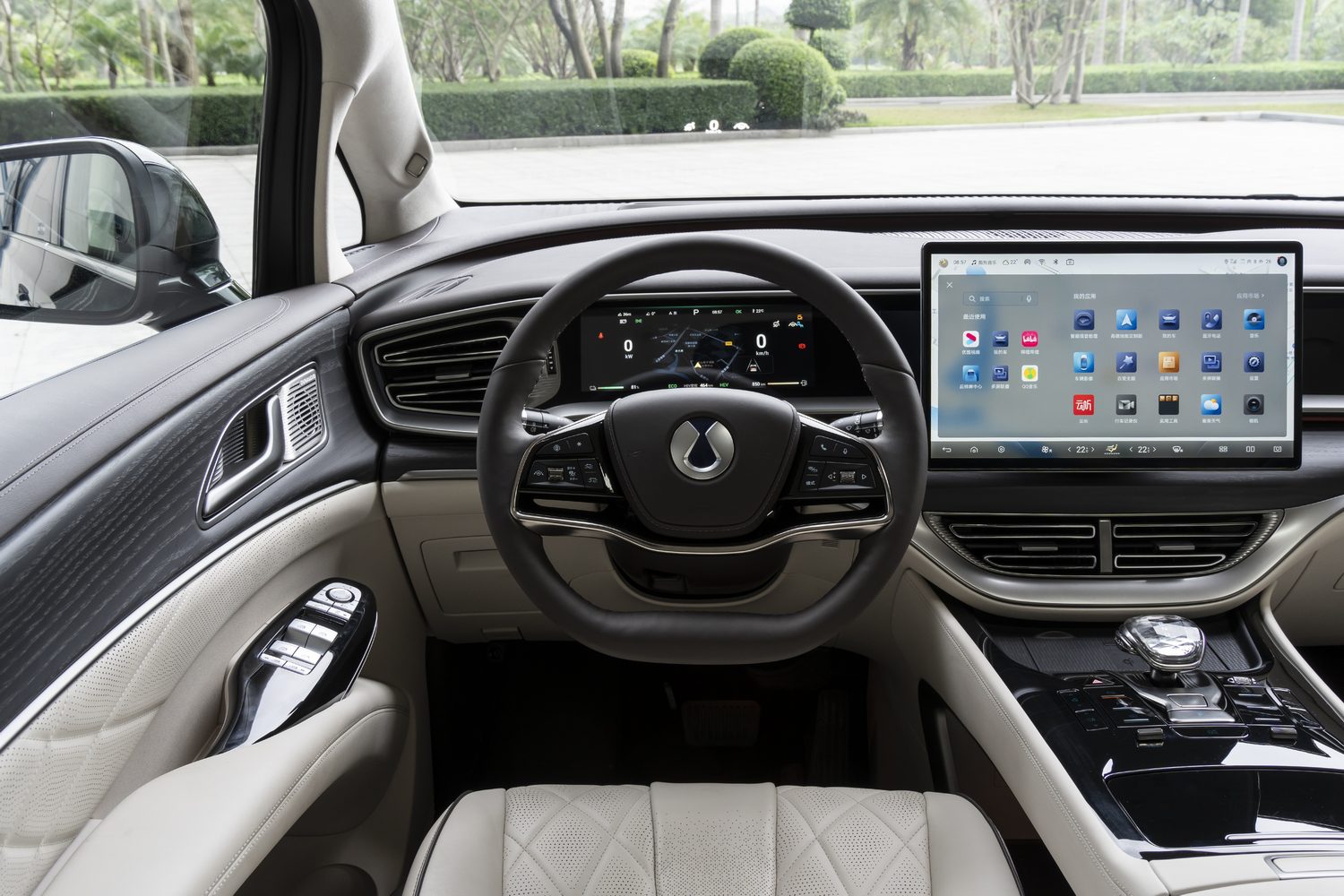
What is immediately evident is the level of quality on show. This might be a big bus, but it doesn’t feel public-transport-spec inside, and the Denza D9 is right up there with Lexus and Mercedes when it comes to cabin quality and refinement. There’s a neat centre console with a large, oblong gear selector and some neat physical buttons, and our car had a head-up display, too.
It’s once you get in the back seats that you realise that the rear compartment is the star of the show. Well, at least in the high-end spec of the model we were driving (and we’re nowhere near knowing what Irish specs and prices might be, nor even close to an actual arrival date - if indeed the D9 will eventually come to Ireland at all, although it is at least possible for now).
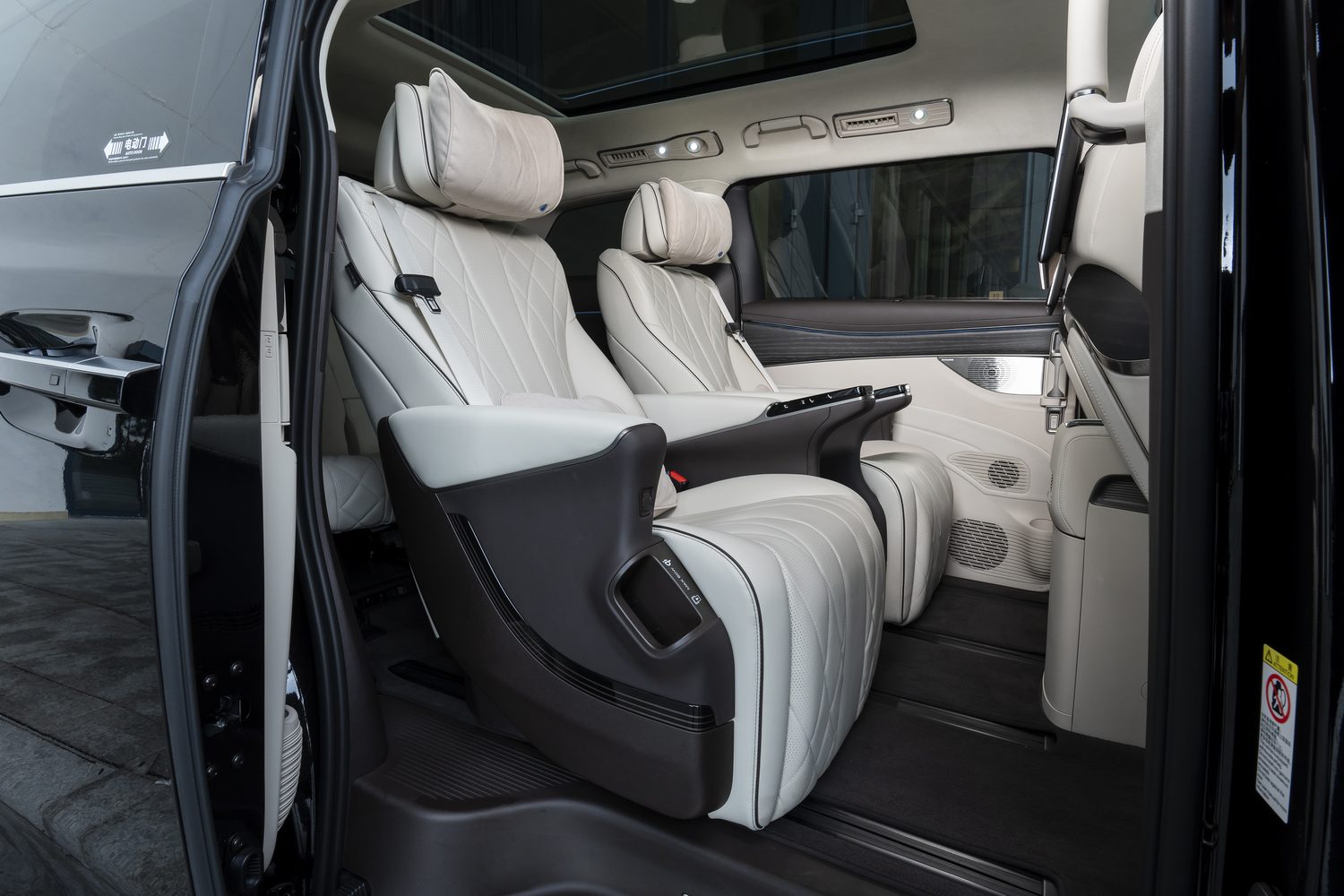
The middle row features two luxurious reclining seats which you might call ‘Club Class’ but that’s to undersell them - no aircraft I’ve ever sat in has had seats as comfortable as this. You immediately sink back into a reclined position (fully adjustable of course, complete with leg rests for really stretching out) and feel enveloped by the deep arm rests, which are surprisingly not restricting, and by the incredibly soft synthetic leather upholstery. These seats are so ridiculously comfortable that sleep becomes an immediate and painless option, especially with the downy-soft headrest pillows.
The functions of the seats themselves are controlled by small phone-sized touchscreens built into the armrests. Again, our car was running Chinese software, but we were able to work out, through trial and error, which were the various commands for massaging, heating and cooling. You would need a BMW i7 or Mercedes S-Class to feel anything like as comfortable in the back of a vehicle as this, and even then, I’m not sure that the Denza wouldn’t have the beating of the German pair, given its outright space.
Attached to the back of the front seats are large touchscreens so that the rear-seat passengers can enjoy streaming movies, have a video call or Zoom meeting thanks to pop-up selfie cameras, or even indulge in some raucous karaoke, which we did - utterly murdering the back catalogue of the Bee Gees and ABBA. Great fun, as long as you didn’t have to listen to us...
Below those screens are neat fold-out picnic or work tables, which use very expensive-feeling cantilevered hinges so that they clear your knees as you fold and unfold them, and there are small seatback pockets too. On the door frame are large grab handles to make getting in and out easier, and the doors themselves are electric, opening and closing at the tug of a handle, or the press of a touchscreen button.
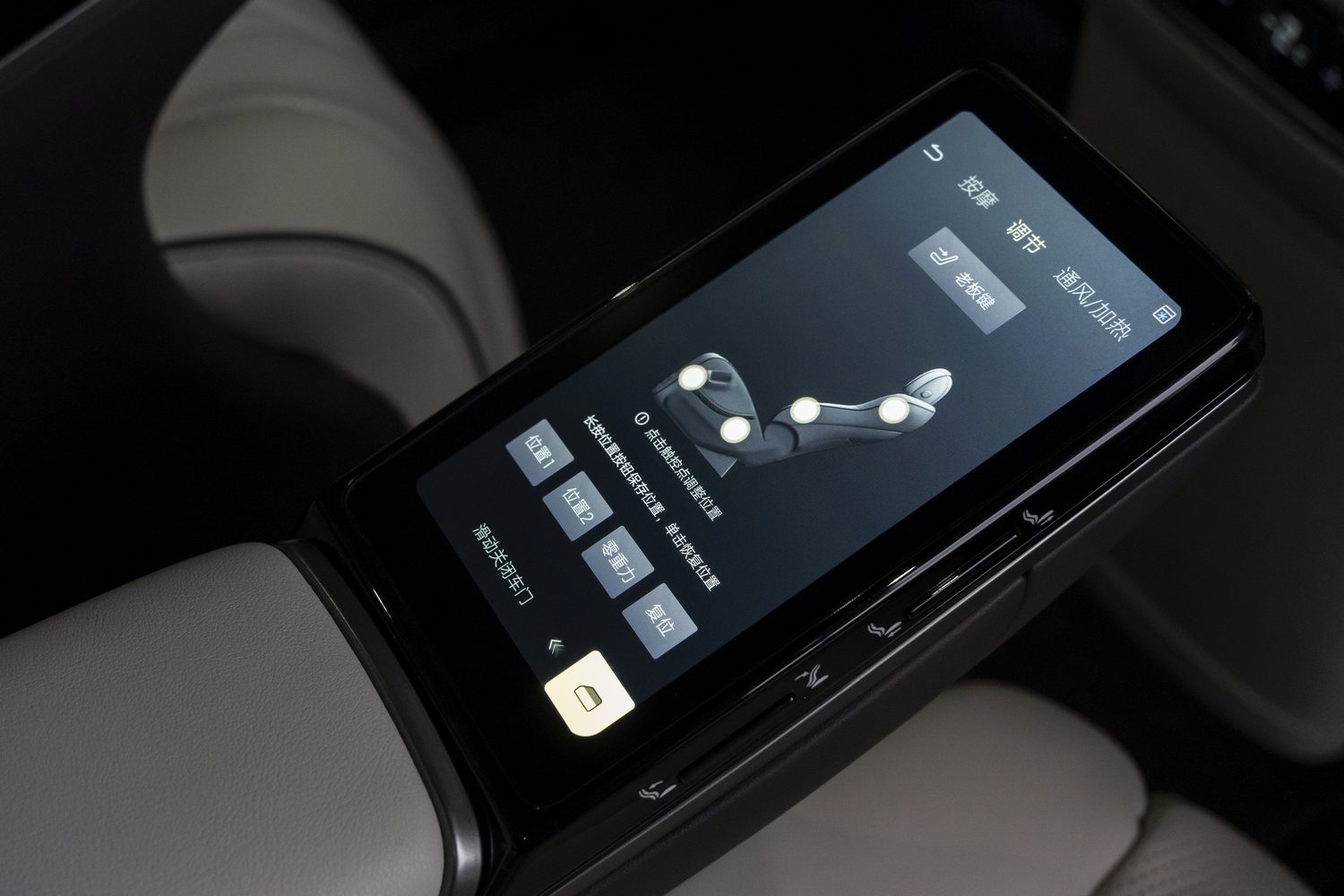
Both the big rear infotainment screens and the smaller touchscreens on the seats can also control the rear climate settings, the ambient lighting, the glass sunroof and more. There’s even the option of a roll-away cinema-style screen and a projector.
In the third row, there is certainly adult-sized space, but the limitation to that is how generous those in the middle row are feeling. If they can be convinced to budge up and not extend their leg rests, then space in the third row is fine. If not, well...
Boot space is excellent and is adjustable because the rearmost seats slide back and forth, but at a minimum it can hold 410 litres, which we found to be adequate for three medium-sized suitcases and a couple of squashy bags.
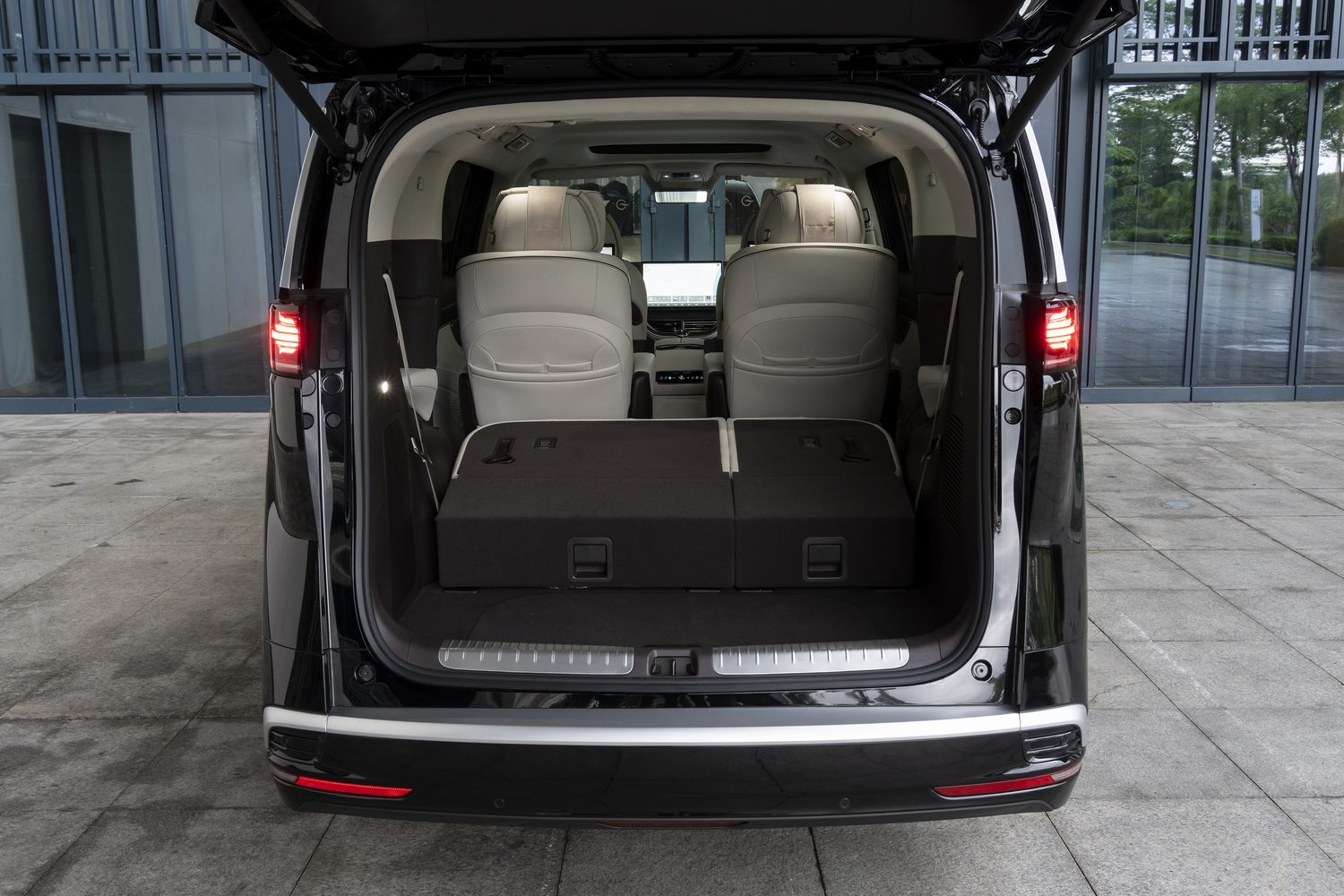
Driving it
While the Denza D9 will launch initially in Europe (again, Ireland, stand by for more info but don’t hold your breath) as a fully-electric model, using the BYD ‘Blade’ lithium-iron phosphate battery and offering a 600km range from a 103kWh capacity (a range that has yet to be confirmed as it hasn’t been through the European WLTP test). The model we were testing used the new ‘DM-I’ plug-in hybrid architecture which is also being rolled out to BYD and Fangchengbao (BYD’s all-SUV spinoff brand) models.
It’s based around a turbocharged 1.5-litre petrol engine, paired - in this instance - with a powerful 170kW (that’s 231hp) electric motor up front and a second 45kW (61hp) rear-mounted motor giving the D9 all-wheel drive. The petrol engine can chime in with 138hp but is somewhat secondary to proceedings compared to the electric motors, although this is a conventional plug-in hybrid rather than a pure range-extender.
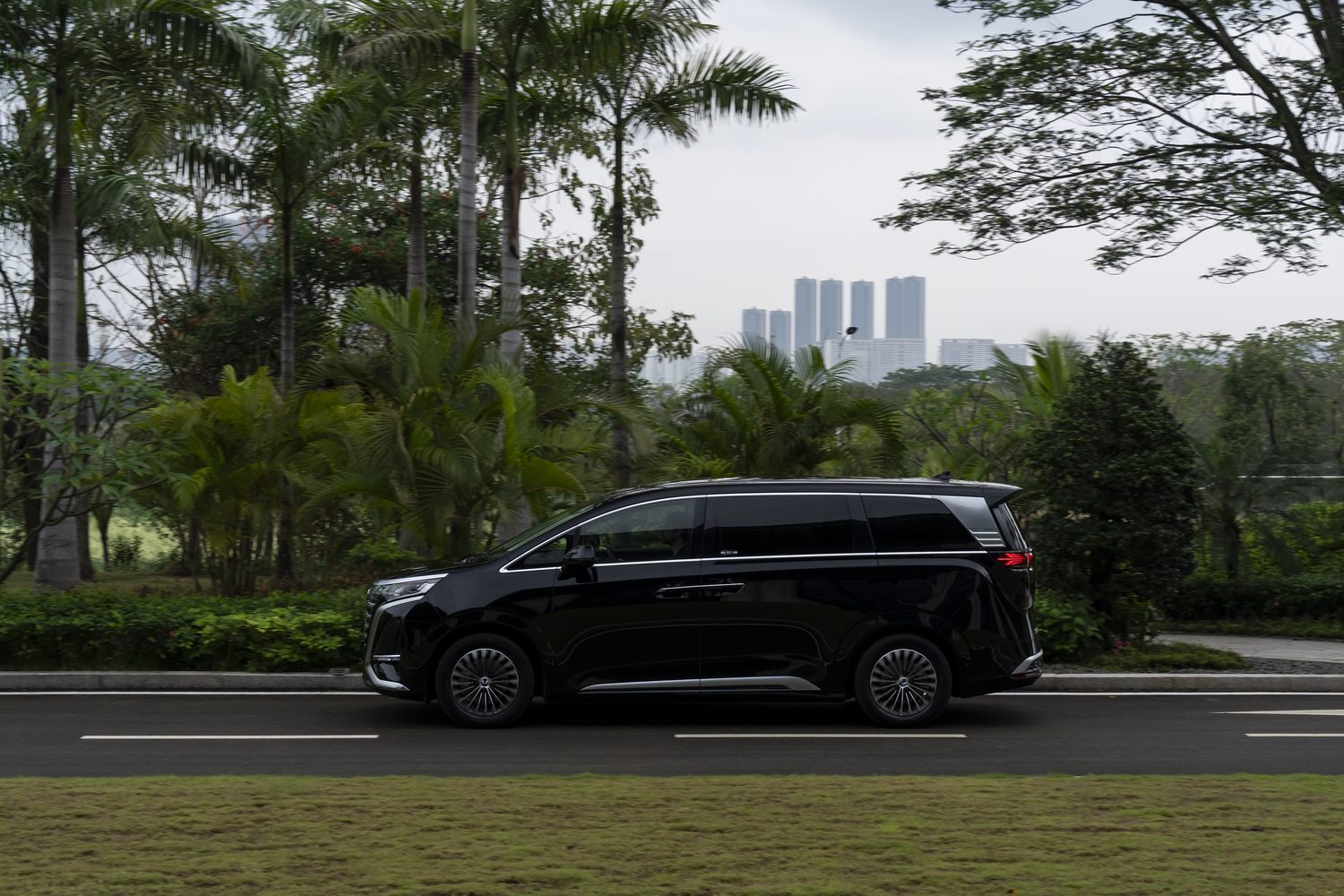
Electric power comes from a substantial 40kWh Blade battery, using the robust lithium-iron phosphate chemistry that BYD prefers for all of its models. And you can see why - we were given a demonstration of a nail penetration test comparing a Blade battery with a conventional lithium-ion battery using nickel, manganese and cadmium chemistry. Safely partitioned into a glass cell, a hydraulic press lowered a sharp steel spike into both battery cells, resulting in a literally explosive demonstration from the NMC battery, which continued to spit flames for several minutes, while the Blade battery remained unmoved and apparently inert. Now, we were unable to independently inspect the batteries pre- or post-test to confirm that they were both ‘live’, but as a demo it was certainly interesting.
In the D9 the 40kWh Blade battery gives you a theoretical electric only range of 180km, but that’s according to the Chinese NEDC test which is far more optimistic than the European WLTP test, and so we’d expect to see a European figure of close to or just under 100km - still impressive for such a bulky, luxurious machine. You can fast-charge it at up to 80kW on DC power, meaning a 20-80 per cent charge takes around 25 minutes, or slow-charge on AC power at 6.6kW.
As far as test driving went, Chinese rules prohibit people without a specific local driving permit from heading out on public roads, so instead we were restricted to a few laps of a tight and twisty go-kart track near BYD’s home city of Shenzhen. Not ideal conditions in which to assess the D9, but surprisingly it coped pretty well.
The steering is numb, but pleasantly weighted and while the D9 unsurprisingly understeers copiously when pushed too hard on a wet racetrack, it displayed decent dynamics - body lean is certainly present, but controlled and it steadfastly refused to wallow, even when presented with sharp direction changes. It was doubtless helped by a set of high-quality Michelin tyres, which were far superior to the locally-made alternatives of some of the other cars we were testing on the same day.
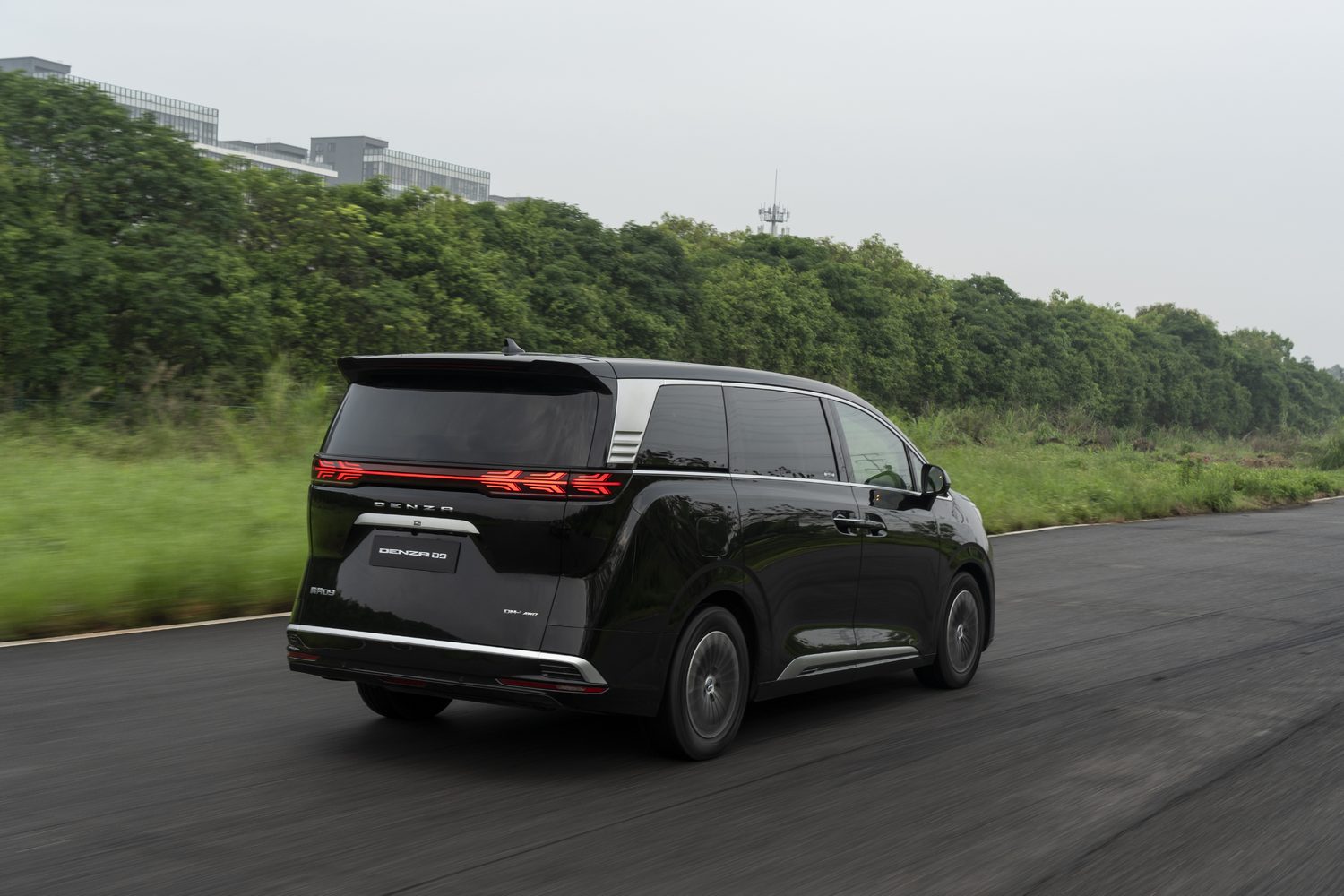
Performance is more brisk than explosive, with the electric motors parcelling out the power and torque gently, which is only appropriate really given that you’ll not want to upset those sat in the thrones in the middle row. The brakes feel up to the task, but there’s no denying the fact that you can really feel the sheer weight of the D9 heaving against the front discs on a big stop.
Later, a run to the airport while sitting in the back seats proved a more useful test of the D9’s chauffeuring abilities. Those reclining middle-row seats really are something, and the overall sense of refinement is excellent, although the ride quality can occasionally be caught out by things such as sharp transverse ridges in motorways. Most of all, the karaoke is brilliant, even if I can’t hit the high notes in Stayin’ Alive.
What you get for your money
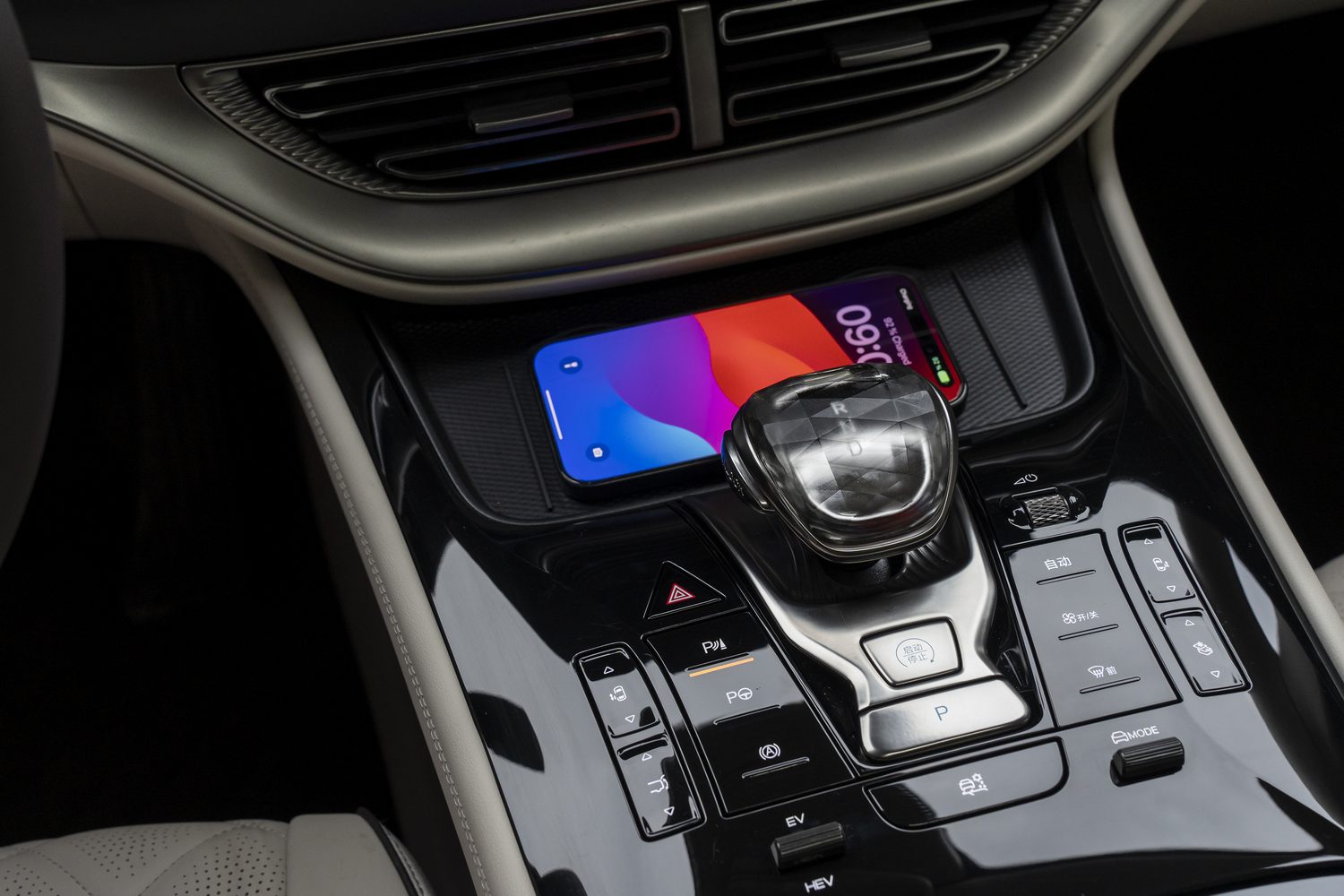
Quite simply, we have no idea what kind of value proposition the D9 is going to present to Irish customers, as any signs of local pricing or specifications are a long way off yet. If the D9 does come to Ireland, it will likely not be a cheap vehicle, however. Rivals such as the Mercedes-Benz V-Class and EQV are pricey things, often easily breaking the €100,000 barrier, and the D9’s rear cabin luxury will not come cheap. The launch of a more affordable version with conventional rear seats is not yet definite.
Summary
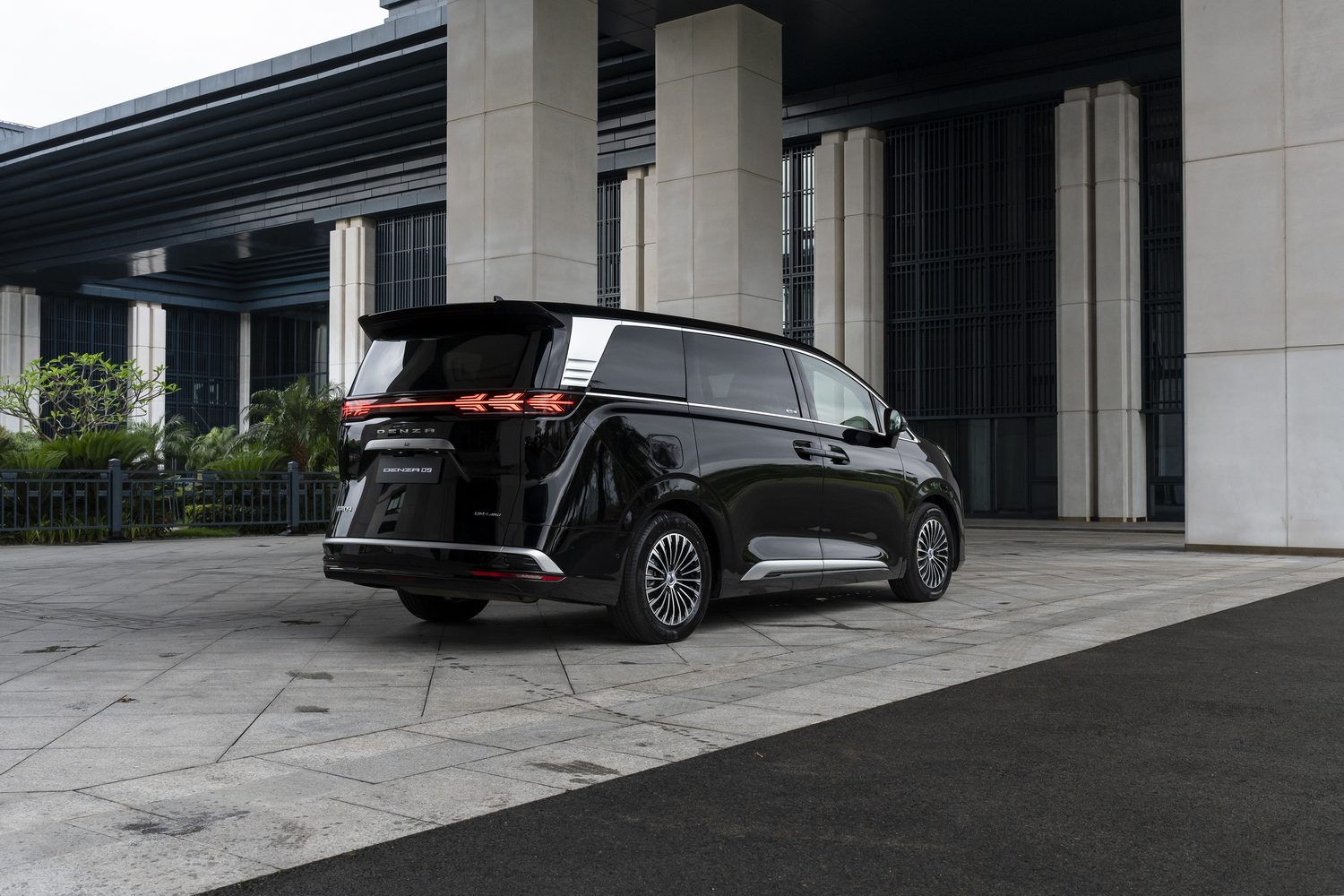
The Denza D9 is, possibly, proof that the MPV might be making a comeback. Mercedes has seen much success with its V-Class and EQV, while Lexus, Volvo and even the London Cab maker, LEVC, are all getting in on the same act. Renault is rumoured to have a retro-look all-electric Espace in the works, too. Let’s hope so, because as the Denza D9 proves, there is little that can beat a well set-up MPV for comfort, space, luxury and practicality. It may not be pretty on the outside, but once you’ve reclined into those magical rear seats, you simply won’t care.

